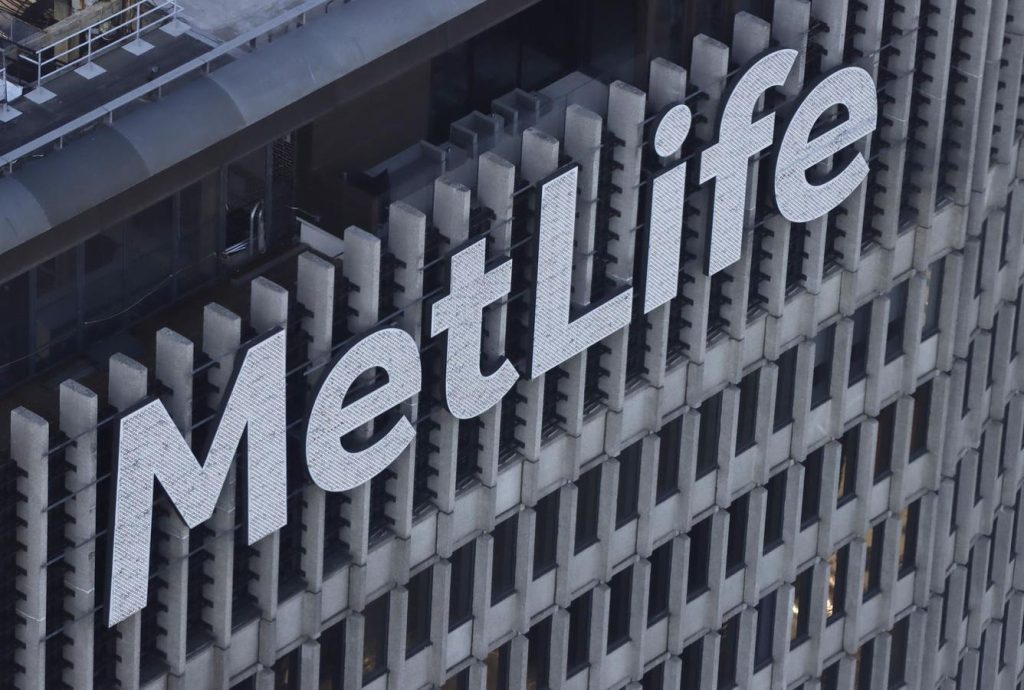MetLife’s Stock Performance and Recent Trends
MetLife, the leading life insurance company in the United States, has demonstrated strong stock performance over the past year, outpacing the S&P 500 index with a 28% gain compared to the index’s 23% return. This performance also surpasses that of its peer, Prudential Financial, which achieved a 19% gain during the same period. However, a closer look reveals a mixed picture, with the company’s recent Q3 2023 results falling short of expectations. Adjusted operating revenues experienced a year-over-year decline of 3.4%, reaching $17.6 billion. This decline was primarily driven by a 5% decrease in premiums, fees, and other revenues, partially offset by an 8% increase in investment-related income. Adjusted earnings per share stood at $1.93, impacted by a 7.3% year-over-year rise in expenses, largely attributed to increased interest credited to policyholder account balances. MetLife’s group benefits business, which provides health, dental, life, and other insurance products to organizations for their employees, faced challenges due to weaker non-medical health underwriting and the results of its annual actuarial assumption review.
Despite this mixed performance, several factors point to a potentially positive near-term outlook for MetLife’s stock. The U.S. Federal Reserve’s indication of a more gradual approach to monetary easing could benefit MetLife. Unlike other insurance sectors that rely on shorter-term policies and underwriting income, life insurers like MetLife are more sensitive to interest rates due to their investment strategies, which heavily involve long-term bonds. A slower easing of monetary policy implies a longer period of potentially higher interest rates, which could positively impact MetLife’s investment returns.
Furthermore, potential regulatory changes and tax reductions under the current political landscape could enhance profitability for insurers like MetLife. A less stringent regulatory environment could translate into lower compliance costs and greater operational flexibility. Coupled with potential tax cuts, this could lead to improved bottom-line performance. MetLife’s commitment to increasing its dividend yield and its robust share buyback program are additional factors that could further support stock gains in the long run. These initiatives return value to shareholders and can contribute to positive price momentum. Considering these factors, MetLife’s current stock price of $82 per share appears undervalued compared to Trefis’ estimated valuation of $86, suggesting a potential upside for investors.
Analyzing MetLife’s Business Segments and Performance Drivers
A deeper dive into MetLife’s business segments provides a more nuanced understanding of the company’s performance drivers. The group benefits segment, which has been a source of recent weakness, warrants particular attention. The challenges faced by this segment underscore the competitive dynamics and evolving market conditions within the group insurance space. Weaker non-medical health underwriting performance suggests potential pricing pressures or claims experience that deviated from actuarial assumptions. The annual actuarial assumption review, a standard practice for insurers, can lead to adjustments in reserves and impact reported earnings. MetLife’s management will need to address the challenges in this segment to ensure its long-term contribution to the company’s overall performance.
On the other hand, the company’s investment performance offers a contrasting picture. The 8% year-over-year increase in investment-related income highlights the benefits of MetLife’s long-term investment strategy. This positive performance underscores the importance of the company’s investment portfolio in driving overall profitability, particularly in an environment of rising interest rates. The company’s ability to effectively manage its investment portfolio will be crucial to offsetting potential challenges in other business segments.
Comparing MetLife’s Performance with the Trefis High Quality Portfolio
The Trefis High Quality Portfolio, a collection of 30 stocks, has consistently outperformed the S&P 500 benchmark over the past four years while exhibiting lower risk. This portfolio serves as a valuable benchmark against which to assess MetLife’s performance. The HQ Portfolio’s superior risk-adjusted returns underscore the importance of diversification and strategic stock selection. While MetLife has shown strong performance over the past year, its longer-term track record exhibits more variability. Investors looking for a more stable and consistent investment strategy might consider the benefits of a diversified portfolio like the Trefis HQ Portfolio.
Evaluating MetLife’s Valuation and Investment Potential
At its current price of $82 per share, MetLife’s stock appears undervalued compared to Trefis’ estimated valuation of $86. This discrepancy suggests a potential investment opportunity for those who believe in the company’s long-term prospects. The factors contributing to this undervaluation warrant further investigation. It is crucial to consider the potential risks and uncertainties that could impact MetLife’s future performance. These include changes in interest rates, regulatory developments, competitive pressures, and the overall economic environment. A thorough assessment of these factors is essential before making any investment decisions.
Key Takeaways and Investment Considerations
MetLife’s recent performance presents a mixed picture, with strong stock gains over the past year but weaker-than-expected Q3 results. The company’s group benefits business faces challenges, while its investment performance remains robust. Several factors could support MetLife’s stock in the near term, including the Fed’s slower approach to monetary easing, potential regulatory changes, and the company’s dividend and buyback programs. At its current price, MetLife’s stock appears undervalued compared to Trefis’ estimated valuation. However, investors should carefully consider the potential risks and uncertainties before making any investment decisions. A diversified portfolio approach, such as the Trefis High Quality Portfolio, can offer a more stable and consistent investment strategy.

